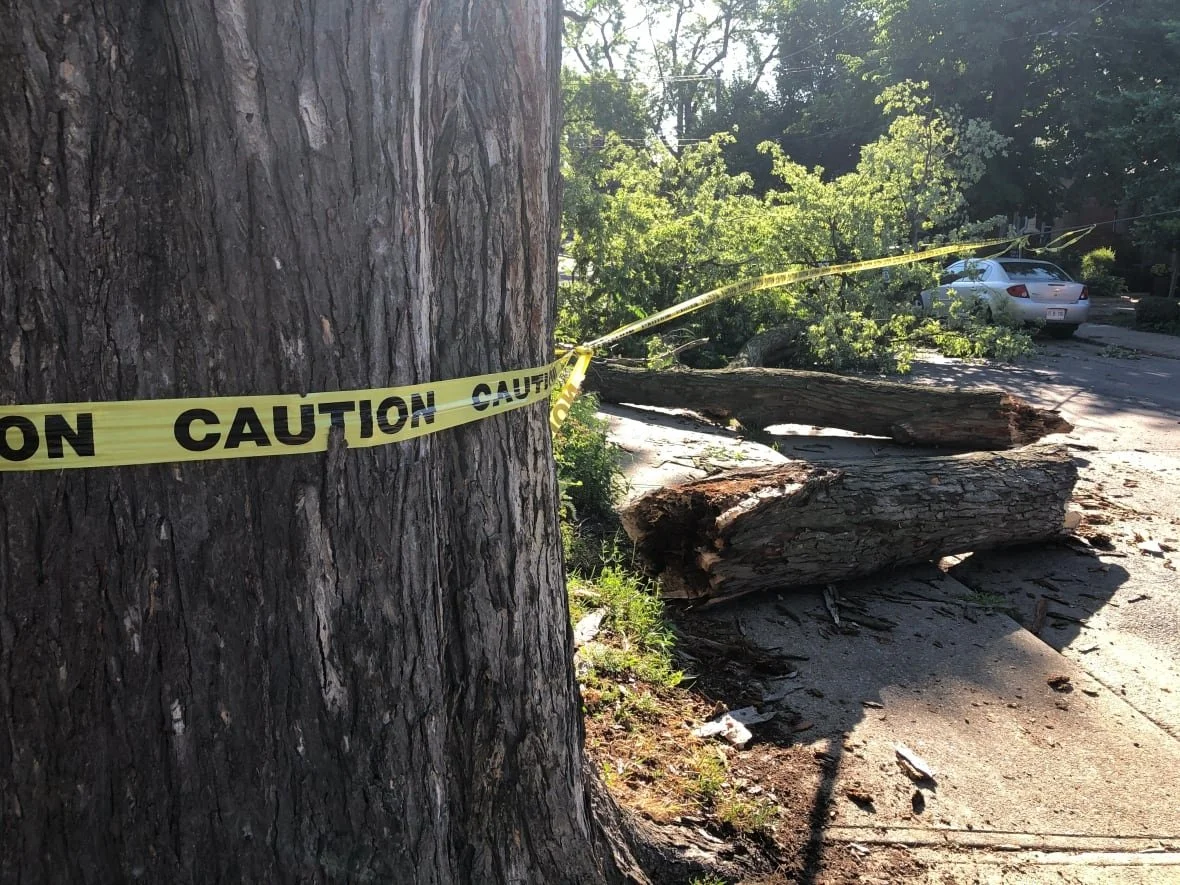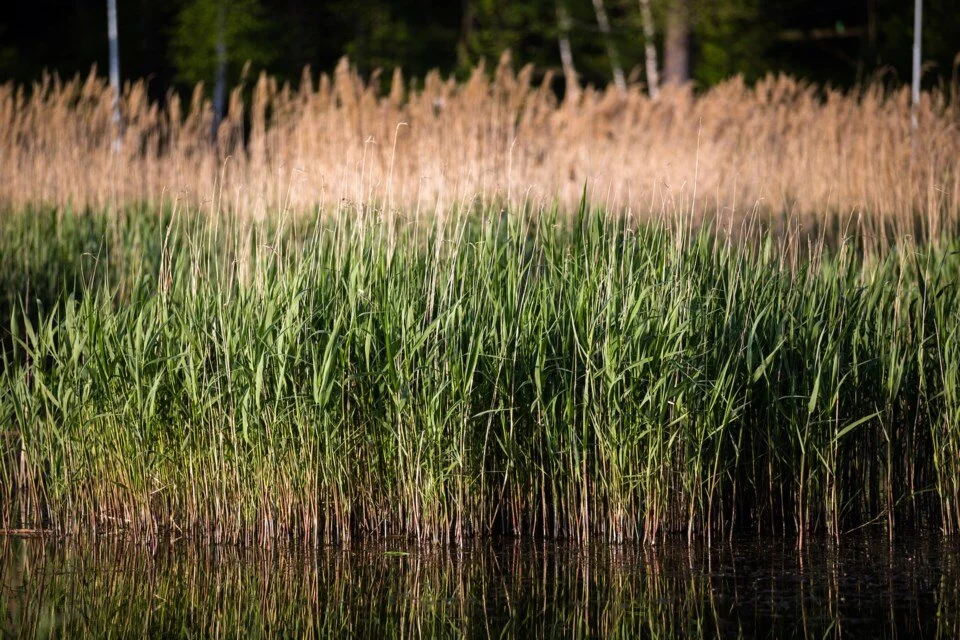When the pandemic started, the province was testing the population and updating the number of COVID cases daily. But four years on, testing has stalled and the main way to get a snapshot of the COVID picture is through wastewater. Mark Servos is with the department of Biology in Canada and Research Chair in Water Quality Protection at the University of Waterloo.
Disrupting the myth of water abundance in Ontario
Ontario may seem to be a water secure region, but new research out of the University of Waterloo challenges the myth of water abundance in the Great Lakes watershed. Using a first-of-its-kind risk analysis, researchers connected water quality, quantity, regulations and public concern to obtain a more comprehensive picture of water security at the local level. The novel approach revealed that at least half of the studied watersheds had a moderate to high potential for risk.
Inspired by insects, scientists pull water from thin air
Water scarcity is a pressing global challenge, and researchers at the University of Waterloo are turning to insects for inspiration to address the problem. A research team at the university has developed technology inspired by spiderwebs and Namib desert beetles, both of which capture moisture from the air and convert it to fresh water. The research is led by Prof. Michael Tam, University Research Chair in the chemical engineering department, and two students, Eva Wang and Weinan Zhao. The team aims to use the techniques perfected by insects and upscale them to deliver larger volumes of water for society.
UW researchers say a simple biofilter can clean up water in wildfire areas well enough to drink
Smoke is a major health concern during a wildfire - but the fires can also have an impact on drinking water. Now, University of Waterloo researchers have helped discover a way to clean up drinking water quickly and inexpensively - which could be a game-changer in remote communities that find themselves without drinkable water.
How wildfires can have a devastating, long-term impact on nearby water supplies
Some researchers thought her team wouldn't even be able to detect an impact from the fires because the Athabasca River was already looking like tea before the fires. Heavy rains tend to send hot fudge-looking runoff from the land into the river, making it look like chocolate milk, she said. Arriving after the fires, Emelko said she could see that hot fudge-looking flow enter the Athabasca's waters as ash, likely carrying nutrients like phosphorous and carbon, made the water supply challenging for treatment processes. "Those [workers] were living in the water treatment plant, working hard to make sure that people could return to their homes and at least have safe water to drink," Emelko told Day 6 host Brent Bambury.
AECOM appoints VP and operations manager for water
Mawani is a design engineer with more than 20 years’ experience in water consulting across Ontario, focusing on municipal wastewater treatment for most of her career. After earning her masters of water resources engineering from the University of Waterloo, she started working at AECOM in 2003, before moving on to Jacobs in 2013 and GHD in 2019.
Recognizing excellence in professional engineering
Emelko co-leads forWater, a Canada-wide and internationally-partnered strategic research network focused on forest management-based approaches for drinking water source protection. The network brings together researchers, government agencies and industry professionals from different disciplines across Canada who are focused on understanding and developing response strategies to climate change threats.
‘Now is the time to protect these wetlands’
Using high-resolution satellite images and computer modelling, researchers from the University of Waterloo have documented the importance small wetlands play in water purification and conservation. “What our work showed is that they are actually really important,” said Nandita Basu, a professor at the University of Waterloo and Canada Research Chair in Global Water Sustainability and Ecohydrology.
A little art, a little science
A walk in the park provided inspiration for a striking photograph that earned national recognition this week for an engineering professor at the University of Waterloo. Dr. Zhao Pan was in a 500-year-old Beijing park in his native China after a sudden rainfall when he noticed huge drops of water hanging from the tips of leaves in cypress trees. “I play with droplets every day, but these were much larger than any I had seen in the lab,” he recalls. “I was amazed by Mother Nature, so I decided to do some research into it.”
University of Waterloo leads team investigating 'forever chemicals' in Canadian water systems
University of Waterloo is leading an interdisciplinary team to identify and treat per- and polyfluoroalkyl substances (PFAS) - better known as forever chemicals – in water systems affecting more than 2.5 million Canadians. The Natural Sciences and Engineering Research Council (NSERC) is providing the funding to detect, identify and treat PFAS-contaminated water, the university said in a media release.
Waterloo leads interdisciplinary team investigating new forever chemicals in Canadian water systems
University of Waterloo is leading an interdisciplinary team to identify and treat per- and polyfluoroalkyl substances (PFAS) – better known as forever chemicals – in water systems affecting more than 2.5 million Canadians. PFAS, are a new class of more than 4,000 environmental contaminants whose impact on human health is unknown. PFAS are used in a wide range of products such as cosmetics, textiles, fire-fighting foams and food packaging materials.
Researchers and Indigenous students learn about Grand River
On June 15, grade nine students from Six Nations Polytechnic (SNP) and the STEAM Academy program donned their waders to join researchers Charles de Lannoy, Karen Kidd and Waterloo Biology Professor Mark Servos to conduct experiments in the Grand River. In its first year, this joint initiative led by McMaster University and the University of Waterloo, is a land-based experiential learning approach to science and engineering. The event is a pilot for a micro-credential course in which the students could eventually gain a McMaster University credit by the end of high school.
Mask as needed: wastewater data shows COVID levels still higher than last June
Go into any store these days and there's a mixture of people wearing masks to prevent the spread of COVID-19 and those who are opting not to wear one. It may have people feeling like they're in COVID-19 limbo. Dr. Hsiu-Li Wang, the Region of Waterloo's medical officer of health, says currently there's "no cut and dry threshold" when it comes to mask wearing and "it will vary according to individual comfort levels."
How to prevent flood and water damage to your home
Government figures have shown that water-related events – including flooding – have surpassed forest fires as the top cause of property damage in Canada in the past several years, costing homeowners more than $1 billion in losses annually. Despite the threat, a recent study has revealed that an overwhelming majority of Canadians living in high-risk regions are not only unprepared to deal with the impact of floods, but they are also unaware of the potential danger.
Flooding cuts 8.2% off average Canadian home sale prices, says study
Flooding in Canada experienced in the last decade cut an average of 8.2 per cent off the sale price of homes in several markets, says a new study. The Intact Centre on Climate Adaptation at the University of Waterloo studied several floods that occurred between 2009 and 2020 in Grand Forks in British Columbia; Burlington, Toronto and Ottawa in Ontario; and Gatineau in Quebec. Data suggests that houses selling last December for an average price of $713,500 would instead go for $654,993, once hit by a flood, reflecting a loss of $58,507, says the study that was partially funded in part by Canada Mortgage and Housing Corp.
Study suggests six steps for better water quality
A study published in Nature Geoscience provides six ways to address nitrogen pollution which can impact our water quality for decades. Although nitrogen fertilisers are critical for growing crops to feed the world, when used in excess they can pollute our water long term, researchers say. A study entitled ‘Managing nitrogen legacies to accelerate water quality improvement’ provides six steps to address nitrogen pollution and improve water quality. The work carried out by the University of Waterloo in Canada provides a roadmap for scientists, policymakers and the public to overcome the challenges associated.
Wastewater testing shows Omicron subvariant circulating in Waterloo region
The University of Waterloo's wastewater monitoring shows an Omicron subvariant has been detected in Waterloo region. The BA.2 subvariant appears to be even more transmissible than the original Omicron mutation of COVID-19, says Dr. Hsiu-Li Wang, medical officer of health for the Region of Waterloo, but there's no evidence that it is a more severe mutation. The samples came from the water treatment plant in the City of Waterloo on Jan. 4 and 9 and from the University of Waterloo water treatment plant on Jan. 18, researcher Meghan Fuzzen told CBC Kitchener-Waterloo. They were independently confirmed by two different out-of-province labs.
From tree maintenance to simple hardware store upgrades, here's what you can do to prepare for climate change
She said some preparations are as easy as a trip to the hardware store. "Make sure your eavestroughs are clear and your downspouts allow water to flow away from your foundation. Put valuable things or potentially toxic items up on a basement shelf, so they don't get damaged or contaminate water." Lou Di Gironimo, general manager of Toronto Water, says storms have become more severe over the past few decades and the city has invested billions of dollars in flood mitigation programs.
What Canadian homeowners need to know about flood insurance
Flooding has surpassed forest fires as the top cause of property damage in Canada in the past several years, costing property owners more than $1 billion in losses each year, according to government figures. Despite the threat, a recent study has revealed that an overwhelming majority of Canadians living in high-risk regions are not only unprepared to deal with the impact of floods, but they are also unaware of the potential danger.
BEYOND LOCAL: Indigenous youth are playing a key role in solving urgent water issues
Unsolved environmental problems, a national mandate to uphold treaty responsibilities and a new appreciation for positive treaty relationships are leading some water researchers to consider new approaches to their work. They are examining how water monitoring practices that are conventionally considered strong, can be improved. Recent research examined how water quality monitoring in the lower Grand River and nearby Lake Erie can inform management to address prolific growth of nuisance algae. Nuisance algae affect wildlife habitats and fishing, as well as swimming and boating. This work is part of the Lake Futures Group at the University of Waterloo and Global Water Futures, Canada’s largest water research collaboration.





















